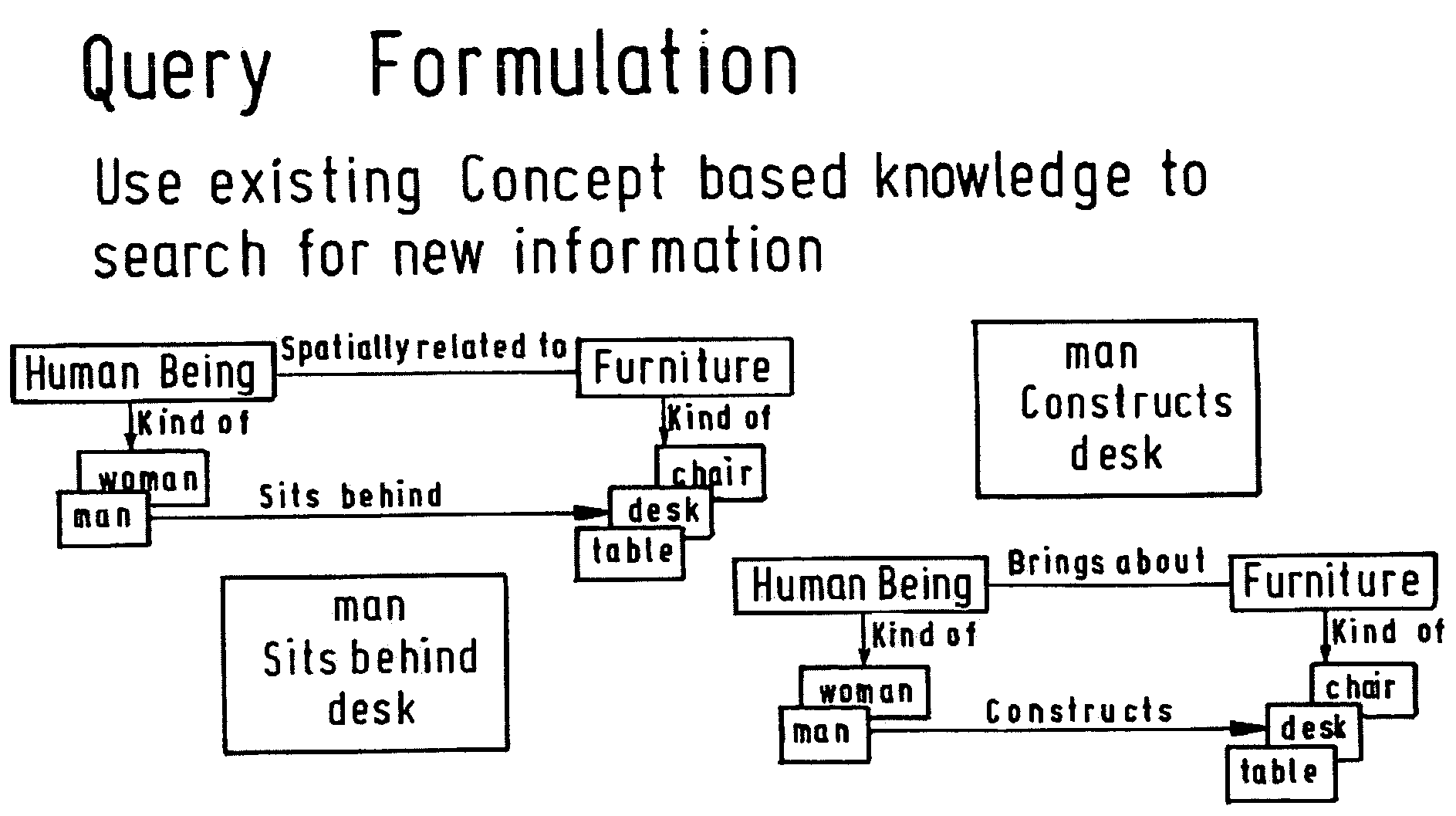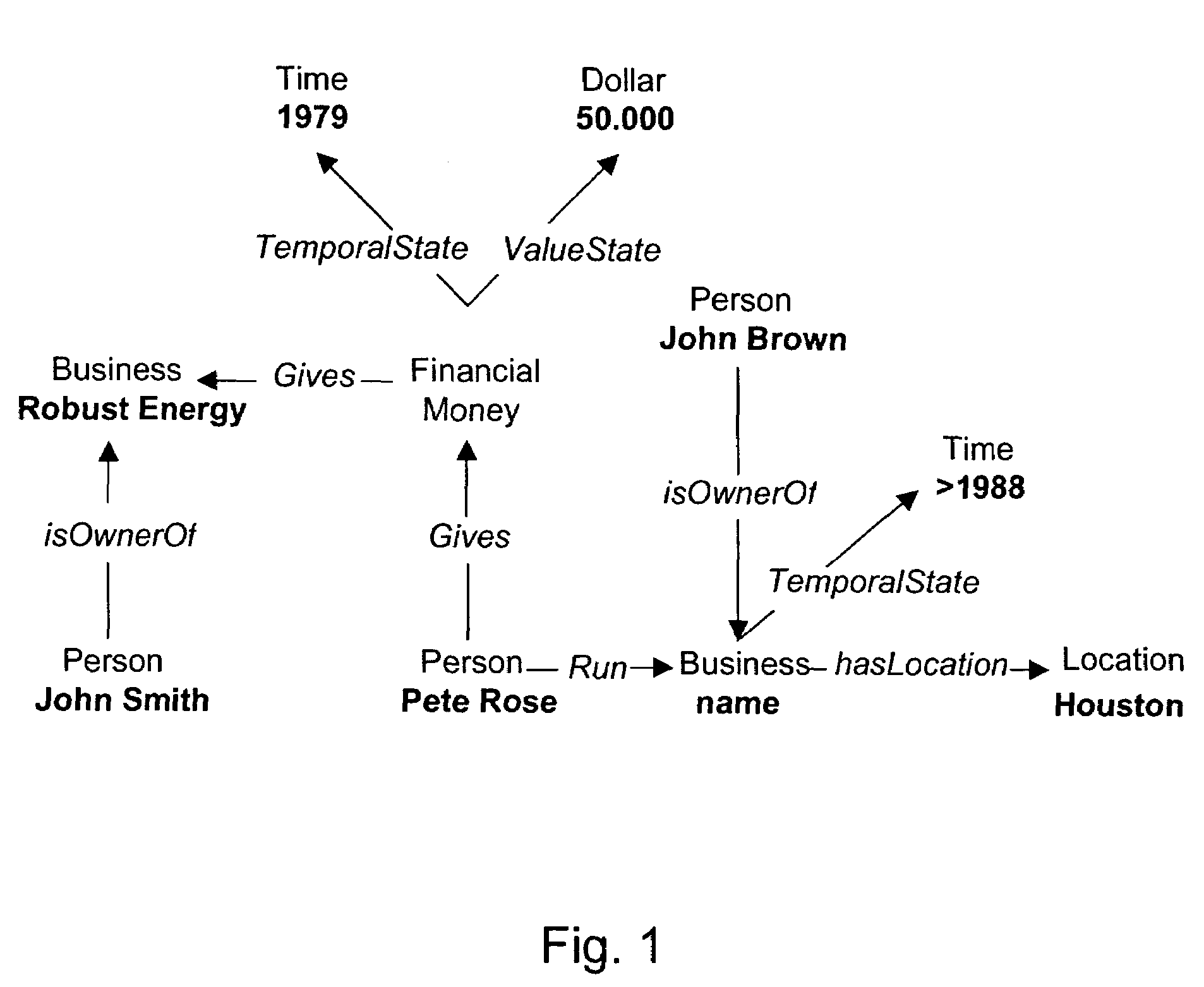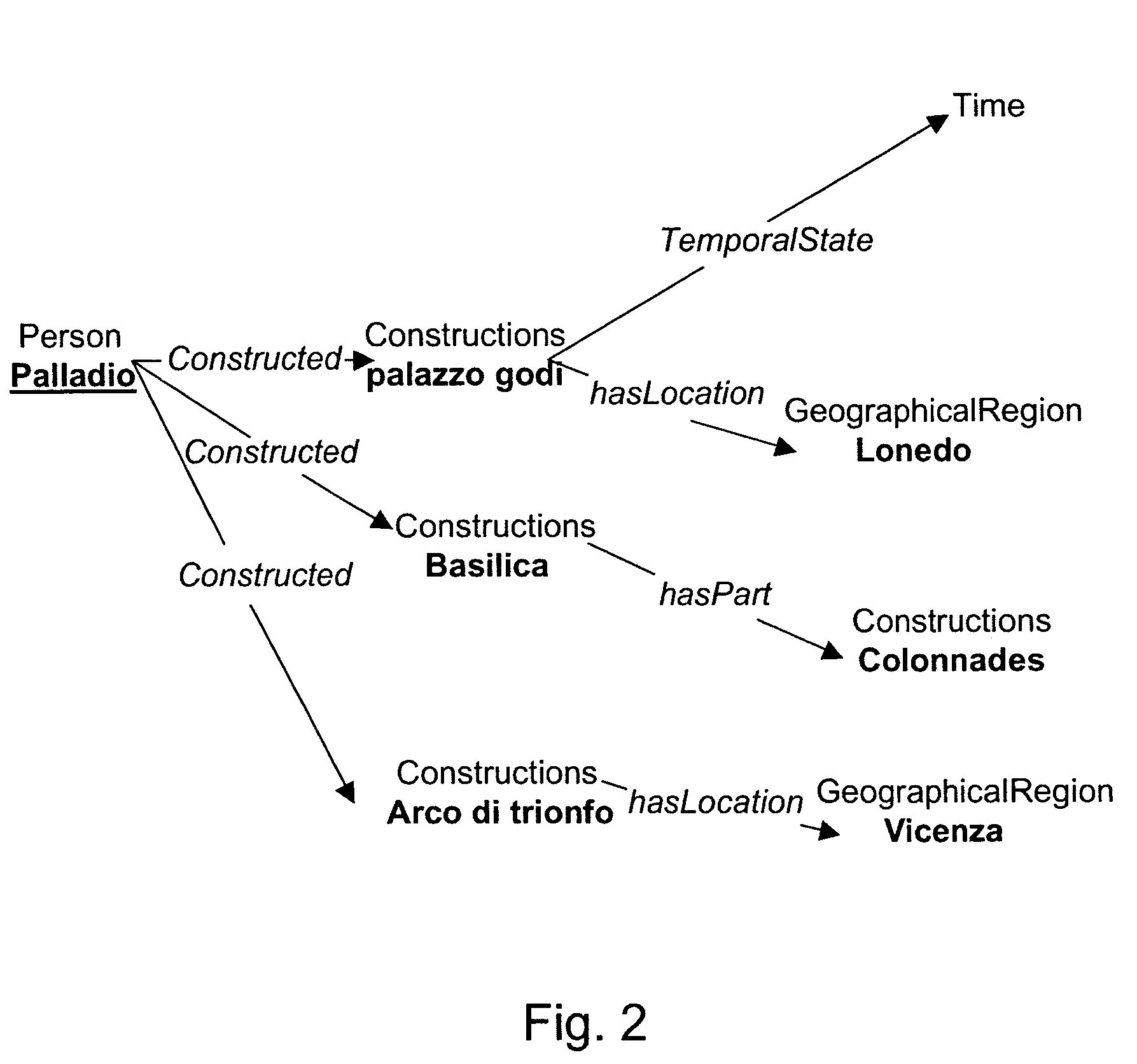Data integration and knowledge management solution
a data integration and knowledge management technology, applied in the field of data integration, knowledge management business intelligence, and artificial intelligence, can solve the problems of limited system used to support knowledge management, insufficient sophistication of supported knowledge related activity, and insufficient representation of the reality domain
- Summary
- Abstract
- Description
- Claims
- Application Information
AI Technical Summary
Benefits of technology
Problems solved by technology
Method used
Image
Examples
example 1
An Example of an Unstructured Text
[0211](45) “Pete Rose ran a business for John Brown in Houston and joined a partnership with John Brown and Frank Klein, ABB's frontman in Houston's Money Bank.”
[0212](46) “In 1979, Smith's first business, Robust Energy, received financing from Pete Rose, a Houstonian and close family friend.”
[0213]The output of the text information analysis process in accordance with the invention is the following:[0214]45 1 Pete Rose >[0215]45 2 ran [SIntentionallyCausedProcess][0216]45 4 business >[0217]45 6 John Brown >[0218]45 9 Houston >[0219]45 13 partnership [SConnectiveRelation][0220]45 15 John Brown >[0221]45 18 Frank Klein >[0222]45 25 bank >[0223]46 2 1979 [0224]46 3 Smith [0225]46 4's [isOwnerOf][0226]46 6 Robust Energy [0227]46 9 received from [gives][0228]46 10 financing [0229]46 13 Pete Rose
Legend: Important Known Information refers to primary information in the text that is also represented in the ontology.
[0230]Secondary relation refers to a relat...
example 2
Palladio
[0246](4) “The results of these studies appear in the buildings which he constructed, of which the earliest known is the Palazzo Godi at Lonedo (1540). (5) The execution of his design for the rebuilding of the basilica in his native town was commenced in 1549. (6) The colonnades of this basilica are his most famous work. (7) His Arco di Trionfo, also at Vicenza, is even now the best, modern imitation of a Roman triumphal arch.”[0247]4 7 in the [hasLocation][0248]4 9 buildings >[0249]4 11 he [0250]4 12 constructed [SIntentionallyCausedProcess][0251]4 18 is the [0252]4 20 Palazzo Godi >[0253]4 23 Lonedo >[0254]5 3 of his [0255]5 8 rebuilding [SlntentionallyCausedProcess][0256]5 9 of the [0257]5 11 basilica >[0258]5 13 his [SPositionalRelation][0259]6 2 colonnades >[0260]6 5 basilica >[0261]6 7 his [SpositionalRelation][0262]6 9 famous [0263]6 10 work [SIntentionallyCausedProcess][0264]7 1 his [SPositionalRelation][0265]7 2 Arco di Trionfo >[0266]7 7 Vicenza >[0267]7 15 of a [0...
PUM
 Login to View More
Login to View More Abstract
Description
Claims
Application Information
 Login to View More
Login to View More - R&D
- Intellectual Property
- Life Sciences
- Materials
- Tech Scout
- Unparalleled Data Quality
- Higher Quality Content
- 60% Fewer Hallucinations
Browse by: Latest US Patents, China's latest patents, Technical Efficacy Thesaurus, Application Domain, Technology Topic, Popular Technical Reports.
© 2025 PatSnap. All rights reserved.Legal|Privacy policy|Modern Slavery Act Transparency Statement|Sitemap|About US| Contact US: help@patsnap.com



